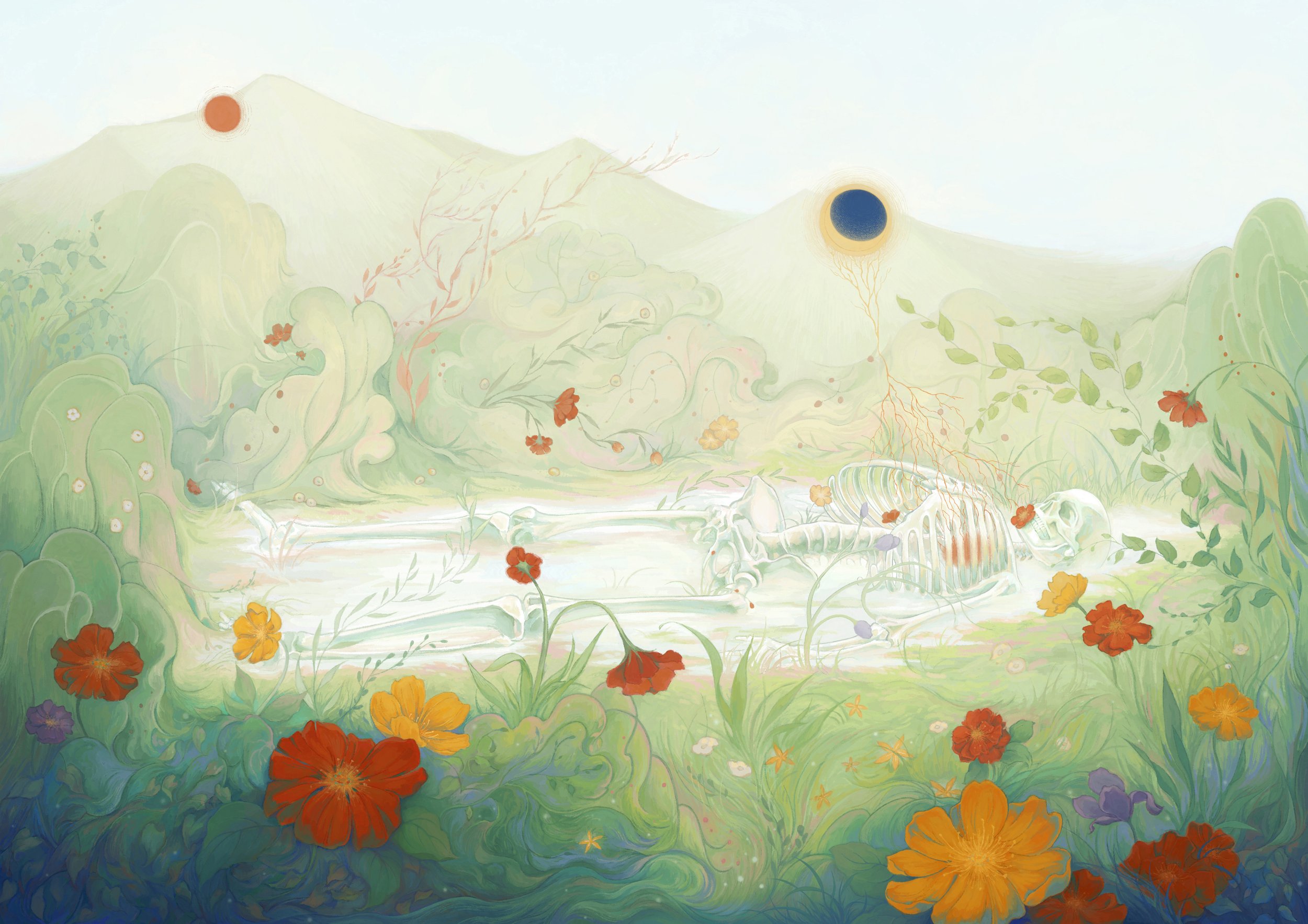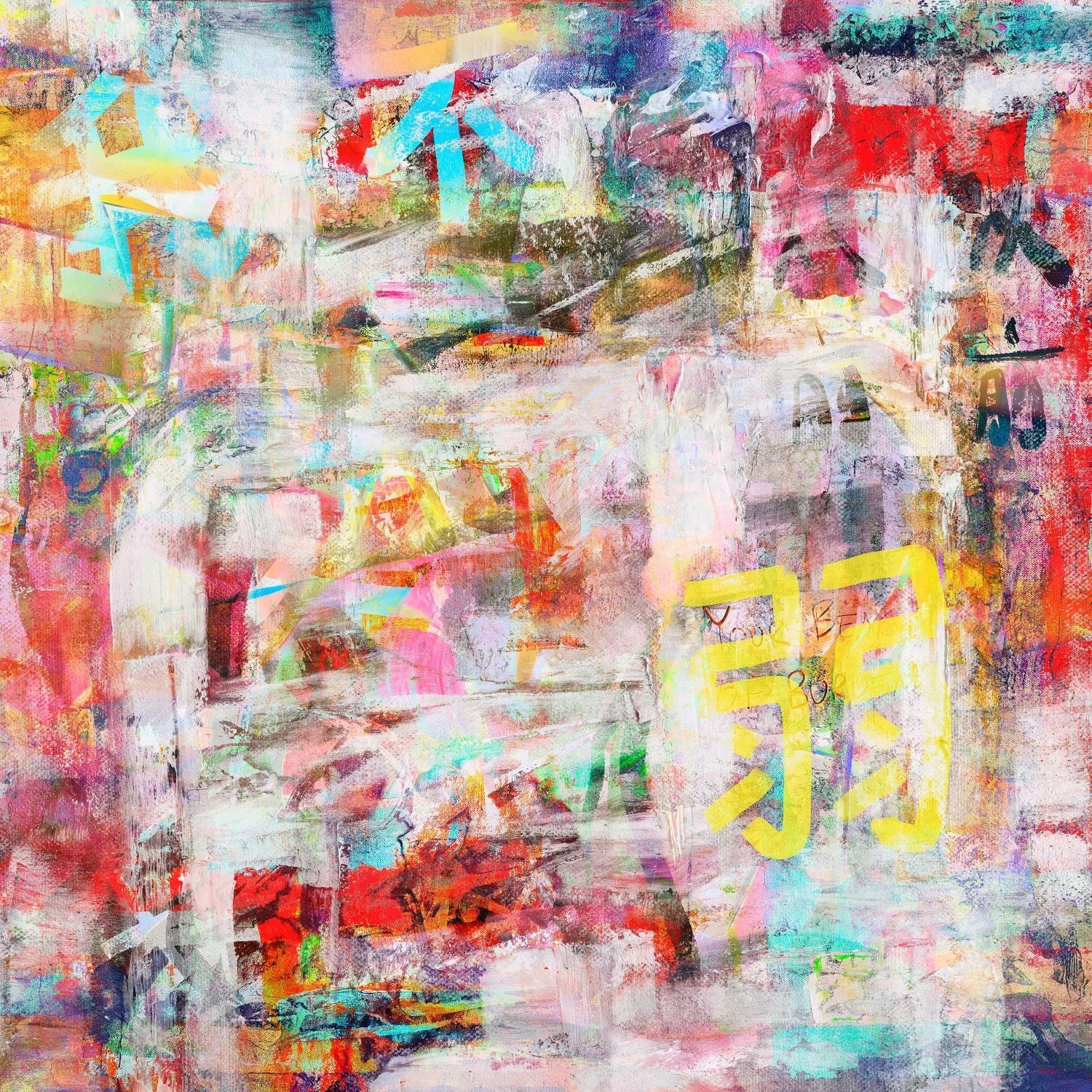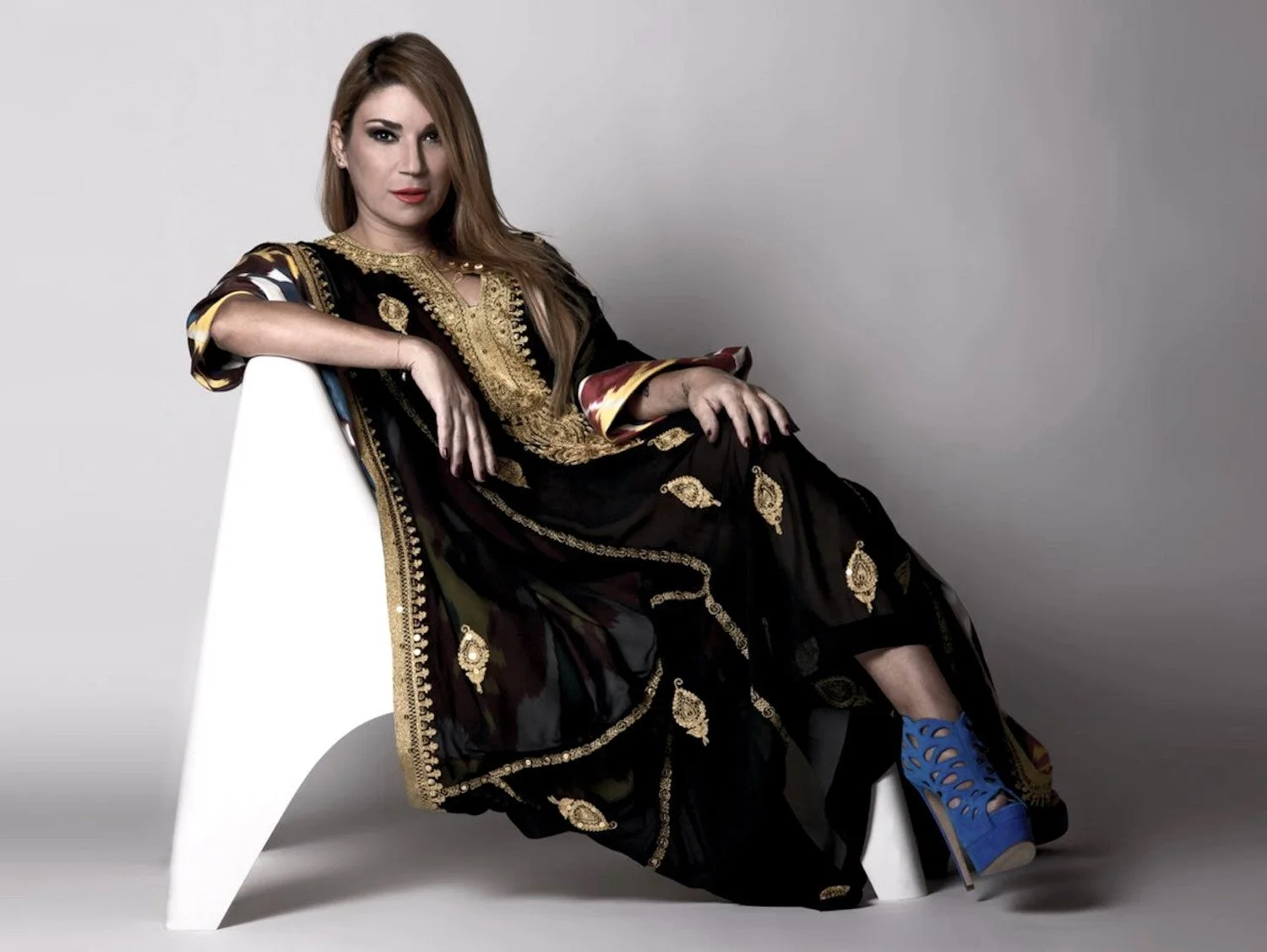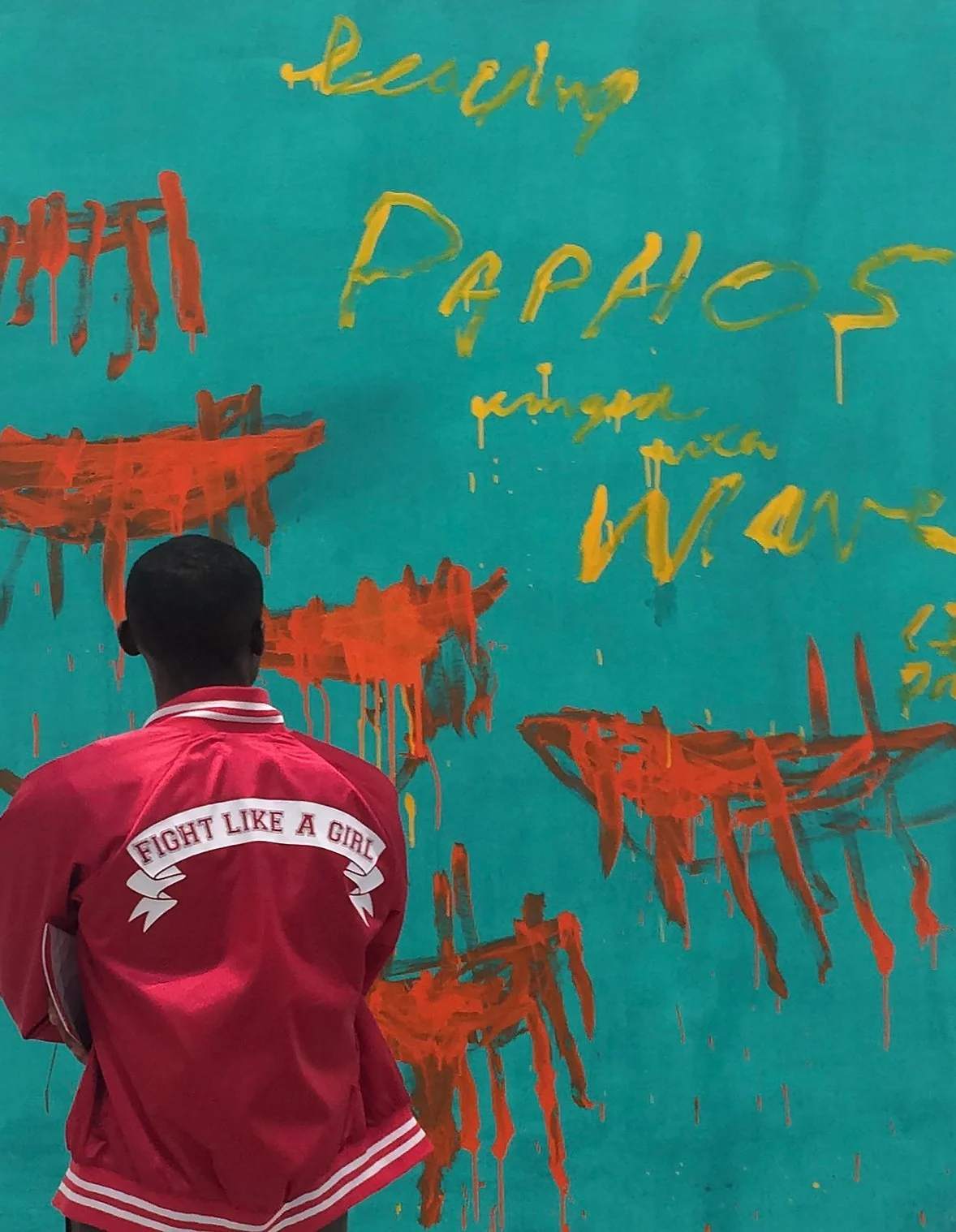INTERVIEW | Yueming Li
10 Questions with Yueming Li
Driven by a fascination with the narrativity of visual art, Yueming Li seeks to delve into the visualization of emotions, feelings, and the inner world through metaphors and symbols. Her artistic prowess has been widely recognized, with notable achievements such as winning a Silver Medal at the esteemed 2023 Guangzhou Illustration Art Festival and a Bronze Award in the Communication Exhibition for Asia-Pacific Visual Arts. Notably, she has been honored with Merit Awards in both the 2022 and 2023 iJungle Illustration Awards and the 2022 China Illustration Art Yearbook. Her works have been shortlisted in the 2024 Communication Arts Illustration Competition and exhibited in the Guangzhou Illustration Art Festival and “Art On Loop” in both London and Athens.
Yueming Li - Portrait
ARTIST STATEMENT
Having lived abroad, Yueming Li contends that visual language erases barriers between diverse languages and cultures. Her upbringing in varied cultural contexts has situated her in an "in-between" state, blending Eastern and Western expressive approaches. Her creative inspiration draws from everyday life experiences and introspection within herself, as her visual expression serves as a bridge of sharing and communication. Through Yueming's work, she invites the audience on a journey of imagination and self-exploration, bridging divides and fostering understanding.
Bury Me, Photoshop, 29.7x21 cm, 2023 © Yueming Li
INTERVIEW
First, can you describe your journey as an artist and how you discovered your passion for visual art?
I have been interested in drawing since I was little. One day, my mom came home from work; she noticed my admiration for my grandmother's flowers and drew one for me on paper. It was fascinating to me at the time how simple lines and shapes created such a beautiful pattern. Subsequently, I began attempting to draw things and people around me. At the age of four, through the introduction from my mom's friend, I met Yanjing Chen, a Chinese artist, and became her student. My mom's intentions were not driven by any utilitarian motives. She did not seek to propel me towards honors; instead, her sole desire was for a mentor to guide me in maintaining my passion and cultivating my understanding and perception of aesthetics.
The journey began with the study of Chinese brush painting, and after several years, Ms. Chen guided me in exploring Western realistic drawing and painting. Once proficient in the fundamentals, I found myself no longer satisfied with merely capturing reality. Life experiences and mood swings inspired numerous imaginative scenes detached from the real world. With fragmented fantastical images filling my mind, I began seeking breakthroughs in visual expression. It was during this time that I encountered illustrations from the Golden Age, which seamlessly combined imagination with realism, greatly influencing me and leading me to explore the field of illustration.
During my years in college, I began experimenting with digital media while developing my visual language simultaneously. Drawing from years of experience with traditional media was immensely beneficial and supportive during this phase, allowing me to fully concentrate on conceptual presentation without concern for technical limitations. Upon graduation and entering the professional field, I continued personal creative pursuits alongside commercial commissions. Many of my self-promotional works were recognized in various competitions. I was greatly encouraged by the first recognition of an Honorable Mention in the No.19 Three x Three International Illustration Awards for "Flowing Moonlight." The same piece was later honored with a Bronze Medal in the 2023 Communication Exhibition for Asia-Pacific Visual Arts and a Merit Award in the iJungle Illustration Awards with "MaMa," "Flying Birds," "The Last Goddess," and "Water Moon." At the beginning of 2024, my illustrations "Wood Dragon" and "Gazing" were shortlisted in the 2024 Communication Arts Illustration Competition, while "Bury Me," "Flowing Moonlight," and "The Library" were selected for the "Arts On Loop" exhibition and showcased in London and Athens.
My journey as an artist is driven by a constant desire to explore. I enjoy and eagerly anticipate surpassing the status. Creating for me is similar to meditation. Throughout the process, I gain a deeper understanding of myself and incorporate the new insights into my work.
Like Mist, Like Fog, Gouache&Photoshop, 42x28 cm, 2023 © Yueming Li
The Day The Seas Disappeared (Page 3), Photoshop, 25.5x24 cm, 2020 © Yueming Li
Your artwork often explores emotions and the inner world through metaphors and symbols. Could you share some specific themes or symbols that frequently appear in your pieces and what they represent to you?
One of the symbols frequently appearing in my work is the moon. In my culture, the moon carries multiple layers of meaning, such as eternity, homesickness, lovesickness, and solitude. The ancestors' imaginations and interpretations have consistently influenced me. From a personal perspective, I perceive the moon as resembling an eye, silently observing the world, especially after being profoundly amazed by the astronomical phenomenon of a supermoon during a journey. Therefore, I incorporate the moon into my works to enhance the vibe and express emotions by altering its phases, as seen in "Bury Me," which was nominated in the No.10 Hiii Illustration International Competition.
Another visual symbol I often use is various forms of human figures. When my works focus on experiences and feelings, I present figures as silhouettes or in combination with various objects metaphorically. For instance, human figures and glass vessels and human forms with candles. In the scenes detached from the real world, I choose to include specific body parts, such as hands or facial features, in the composition. These human figures serve to symbolize the "self" within the scene, aiming to strengthen the first-person perspective in the work through abstract or realistic depictions, thereby engaging the audience to immerse themselves in my creations.
How do you approach incorporating digital mediums and gouache in your artwork? What unique qualities do each of these mediums bring to your creative process?
After using Photoshop for a period of time, I became dissatisfied with simple digital painting. I began creating and adding textures to my works. I later experimented with gouache as the main medium and Photoshop as the assistant in the series "Auditory Hallucinations." I deeply appreciate the blending of colors, the brushstrokes, and other marks left by the traditional media in the creative process. The natural, unpredictable, and uncontrollable texture cannot be replicated in digital drawing. In this project, I first painted on watercolor paper and then scanned and imported the pieces into Photoshop, which allowed me to zoom in on the pieces beyond what is achievable in real life. While retaining the texture, I added limited details, such as highly saturated colors, which cannot be achieved with traditional media. I am excited that this combination has received recognition, with one of the pieces, "Surrounded," being selected for exhibition and winning a Silver Medal in the 2023 Guangzhou Illustration Art Festival. This attempt has inspired me greatly and brought me a different experience in the creative process by combining the characteristics of traditional and digital media to present my artwork.
Surrounded, Gouache&Photoshop, 28x35 cm, 2023 © Yueming Li
Can you discuss the role of everyday life experiences and introspection in shaping your creative inspiration? How do you translate these experiences into visual expressions in your art?
I left my hometown when I was 15, and the experience of living abroad has placed my in an "in-between" state. My perspective is neither entirely Western nor completely aligned with that of Chinese culture. When I turn my attention inward, I find myself occupying both the subject and object positions, simultaneously observing and being observed.
The different perspectives and experiences in daily life establish the space for my inspiration to grow. They also prompt me to pay attention, focus, and observe the connections between myself and "others," including the relationship as a modern woman with my cultural background, as a daughter with my mother, as the "other" with the Western community, as a woman within the patriarchal system, as a creator with the audience.
Many times, my works originate from a certain experience or feeling of mine. I extend them by using elements or symbols that resonate with the audience, and I then transition my first-person perspective to that of a third-person storyteller to refine my expression.
Your work is described as a bridge of sharing and communication. How do you envision your art connecting with viewers on an emotional or personal level?
As a visual artist, I aspire to cultivate a dynamic relationship between my art and the audience, one that transcends traditional notions of one-way communication. I aim for a mutual exchange where viewers are encouraged to derive their own interpretations from my works. Through careful composition and color choices, I strive to create atmospheres that lay the groundwork for emotional expression, fostering a connection between the artwork and its audience.
Human experiences and emotions are deeply intertwined with societal and collective influences, resonating with others on various levels. My goal is to evoke emotional resonance and establish personalized connections through my artwork. In my creative process, I integrate narrative elements into my works, leaving space for open interpretation. This allows individuals from diverse cultural backgrounds to freely attribute their own meaning and understanding to my art. For instance, in the feedback I received regarding "Bury Me," interpretations ranged from celestial burial to reflections on the relationship between humanity and nature, demonstrating the richness of personal perspectives in engaging with my work.
What challenges do you face when conveying complex emotions and inner states through visual art, and how do you overcome them?
Painting is an ongoing process of addition, yet over years of creative exploration, I've come to realize the importance of restraint. While a piece of artwork has the potential to carry a wealth of information and emotion, inundating it with excessive detail can distract from its intended focus. In my artistic endeavors, I aim to strike a balance between emotion and rationality. When grappling with complex emotions or inner states, I meticulously refine my content, distilling it to its essence and prioritizing elements that serve the overarching message of the piece.
Sometimes, this means paring down extraneous details that may dilute the viewer's comprehension. Other times, I opt to present content in a series, allowing me to dissect complexity, deconstruct intricate themes, and present them as cohesive visual narratives across multiple works. This approach enables me to explore emotions and inner states from diverse perspectives, offering viewers a nuanced and multifaceted experience.
Echoes from Inside, Gouache&Photoshop, 12x28 cm, 2023 © Yueming Li
Chaotic, Gouache&Photoshop, 18x30 cm, 2023 © Yueming Li
Could you walk us through your typical creative process, from the initial idea or inspiration to the final artwork? Are there any rituals or routines you follow to help you get into a creative mindset?
Typically, my creative process involves two main approaches, categorized based on the source of inspiration: abstract and concrete ideas. Abstract ideas often begin with words, such as short phrases, which serve as the thematic foundation for my work. Before beginning to paint, I conduct research and gather references, sometimes utilizing mind maps to expand my thoughts and determine the visual content. Based on the results of this initial step, I create rough sketches and refine them until I am satisfied with the composition.
Concrete ideas, on the other hand, refer to compositions that emerge fully formed in my mind. I record these ideas and use them as the basis for refining the piece. For example, "Wood Dragon" originated from an image of a dragon emerging from a screen, which I then developed further with additional details. Generally, the first approach is more common for me. In my daily life, I often jot down snippets of words or ideas that come to mind, which I later integrate and expand upon creatively.
How do you navigate the balance between Eastern and Western expressive approaches in your work? How do these two different backgrounds help you develop your work?
Through years of exploration and practice, I have integrated the most impactful characteristics from Eastern and Western artistic expressions into my personal creations. Practicing Chinese brush painting has not only honed my skills in depicting elements of nature such as mountains, rocks, and plants, but has also emphasized the expression of "Yi Jing" (artistic conception) – the integration of void and solid, and the unity of figures and scenery. When studying under Ms. Chen, she often reminded me of the principle: "dense as the wind cannot go through, sparse as a horse can pass," a guiding principle I continue to adhere to and practice today.
On the other hand, Western realistic painting techniques have contributed elements such as lighting and perspective. The light and shadow structures of classical oil painting, the Impressionists' use of color to convey atmosphere, and Cubism's analysis and recombination of objects have greatly influenced my approach. As a result, in my works, I often highlight themes and construct space using light, shadow, and color while also rendering atmosphere and conveying mood through background elements in a traditional Chinese painting style. This fusion of "void and solid" in my visual language creates a unique and harmonious synthesis of Eastern and Western influences.
Wood Dragon, Photoshop, 31x21 cm, 2024 © Yueming Li
Are there any specific artists, movements, or cultural influences that have significantly impacted your work? How do you incorporate these influences while maintaining your own unique artistic voice?
The first artist who comes to mind is Odilon Redon. His works and his quote, "My originality consists in putting the logic of the visible to the service of the invisible," have greatly influenced how I approach the content of my own works. The dreamy and fantastical illusions in his art deeply resonate with me and have inspired me to explore visualizing my imaginative scenes.
Another artist I must mention is the Chinese artist Axing Xi. I discovered his work through his illustrations of Chinese mythologies. His ability to seamlessly blend lines, vibrant colors, decorative patterns, and figures using both Chinese and Western painting techniques is truly remarkable. Inspired by his approach, I began experimenting with blending these two expressive styles and exploring narrative self-expression in my own work.
Finally, you have received several prizes and recognition for your work. Drawing from your experience, what advice would you give aspiring artists interested in exploring similar themes or techniques in their own work?
Natural and heartfelt expression is paramount in our artistic endeavors. It is through investing our personal thoughts and creative passion that our works evoke deep resonance. While we continuously create, it's equally important to seek feedback from the audience. This feedback goes beyond simply evaluating whether a piece is good or not; it's about understanding what viewers see and feel, how they perceive the message conveyed by the artwork, and how they interpret it. By embracing feedback, we avoid positioning ourselves solely as exporters of art; instead, we engage in a positive feedback loop that enriches our creative process.
Artist’s Talk
Al-Tiba9 Interviews is a promotional platform for artists to articulate their vision and engage them with our diverse readership through a published art dialogue. The artists are interviewed by Mohamed Benhadj, the founder & curator of Al-Tiba9, to highlight their artistic careers and introduce them to the international contemporary art scene across our vast network of museums, galleries, art professionals, art dealers, collectors, and art lovers across the globe.





















